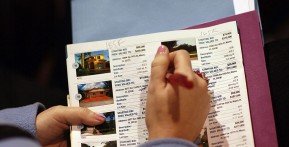Mortgage rates in the United States slid to reach their lowest in 2014 this week as lighter economic reports pushed bond yields lower, according to Freddie Mac, the government-backed lending giant's, latest weekly mortgage survey.
The average 30-year-fixed mortgage rates went down to 4.12 percent from last week's 4.14 percent. Last year during this time, the rate was 4.40 percent.
The average 15-year-fixed mortgage rates declined 0.6 percentage points to 3.24 percent from last week's 3.27 percent. It averaged 3.44 percent at the same time, last year.
The treasury-indexed adjustable mortgage rates witnessed a decline too.
The five-year treasury-indexed hybrid adjustable mortgage rate fell 0.5 percentage points to 2.97 percent from last week's 2.98 percent. The rate was 3.23 percent a year ago.
The average one-year treasury-indexed adjustable mortgage rate was the only rate that went up this week to 2.36 percent, up 0.5 percent points from last week's 2.35 percent. The rates averaged 2.67 percent at the same time last year.
Mortgage rates usually follow the yield on 10-year treasury notes, which traded at 2.42 percent this Wednesday. That was just 0.5 percentage points above the 2014-low of 2.41 percent, the Associated Press reported.
Freddie Mac experts said that this week's mortgage rates declined due to the largely unchanged month-on-month retail sales report.
The average mortgage rates fell after holding steady for two weeks. The fluctuations have largely been limited but not many are taking advantage of it.
According to the Mortgage Banking Association's (MBA) weekly report, mortgage applications for home purchase and refinancing fell this week. Their index saw a 2.7 percent decline in both the cohorts for the week ended August 08.
The MBA report came just two days before the National Association of Realtors revealed that their home affordability index fell across the country on a month-over-month basis due to higher home prices and income qualifications.
The National Association of Home Builders also echoed NAR's report as its own exclusive Housing Opportunity Index (HOI) slid in the second quarter of 2014.
"The second quarter HOI reflects the slow but steady march toward the historic levels of price appreciation and interest rates that result in affordability levels we experienced before the mid-2000s boom," NAHB chief economist David Crowe said in a statement.
However, Crowe added:
"While we are seeing a slight decrease in affordability, it is still fairly high by historical standards."
Want to know how to boost credit scores? Read on for more information.













